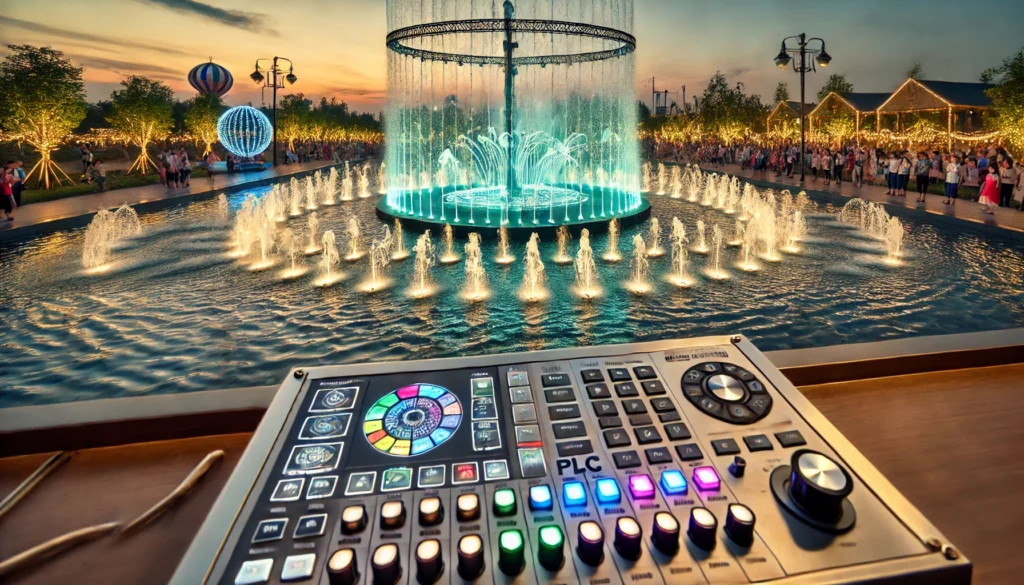News
Musical Fountain- PLC Program Control System
- 2024-07-08
Most of the fountain control methods used by musical fountain manufacturers are PLC (programmable logic controller) control. This type of control system usually includes the following core parts:
1.Input signal processing
Audio signal analysis: The music signal first passes through an audio processing unit that can analyze the rhythm, frequency and volume of the music. This is usually done through fast Fourier transform (FFT) or other signal processing techniques to extract the beat and melody characteristics of the music.
Sensor input: In addition to music signals, PLCs may also receive other inputs from the environment, such as wind speed and water level sensor data, which can be used to adjust the performance of the fountain to ensure safety and optimize the effect.

2. Control logic
Real-time data processing: After receiving the data of music and environment, the PLC matches this data with the preset control logic. This includes deciding which nozzles are activated on a specific music beat and what effects they should show (such as height, shape or color changes).
Ladder logic: PLC programming usually uses ladder diagrams, which is a graphical programming language used to create and manage logical processes. Each logic block represents a different operation, such as timers, counters, logical comparisons, and output executions.

3. Output Execution
Fountain Actuator Control: Based on the logic of the PLC, the corresponding output signals will be sent to the fountain’s actuators, such as pumps, valves, and lights. These actuators adjust their operations based on the signals received to create visual effects synchronized with the music.
Dynamic Adjustment: The control system can dynamically adjust the output based on real-time feedback to keep the fountain performance in perfect sync with the music, and can also respond to environmental changes (such as wind speed changes causing water to drift).
4. User Interface and Monitoring
Operation Interface: Operators can monitor the status of the entire system through the user interface, adjust settings, or perform troubleshooting. This usually includes real-time data visualization, system logs, and alarm functions.
Remote Control and Monitoring: Modern PLC systems often support remote access capabilities, allowing operators to monitor and control the fountain system from a remote location, which is particularly important for large-scale displays or occasions where direct access is inconvenient.


